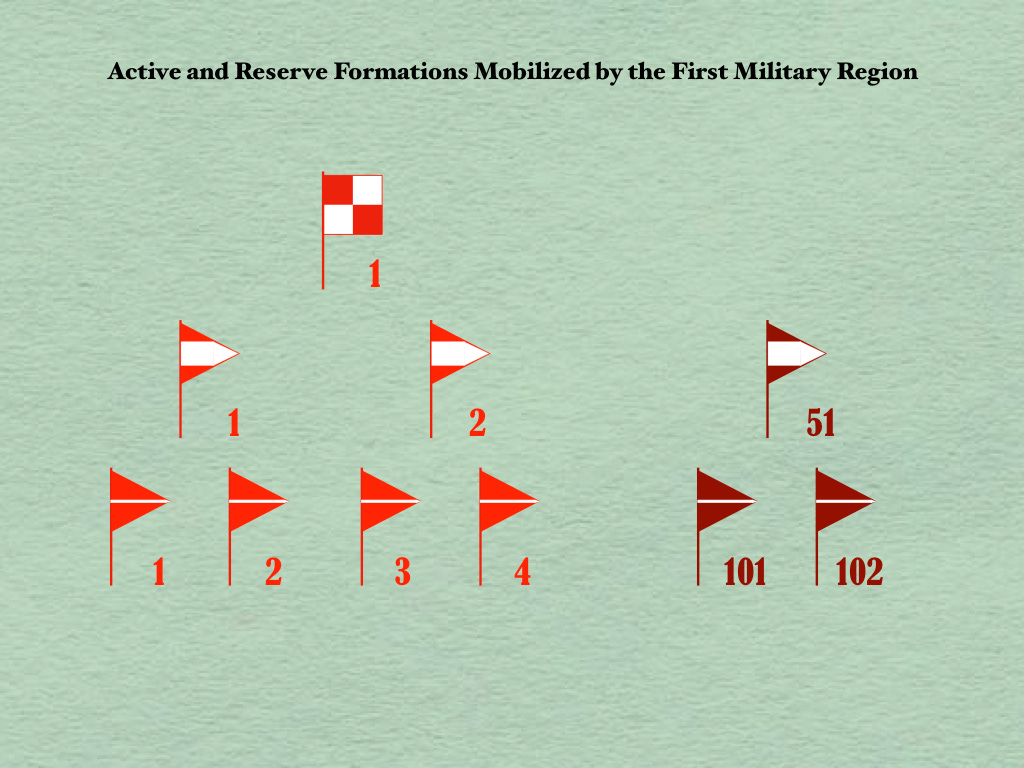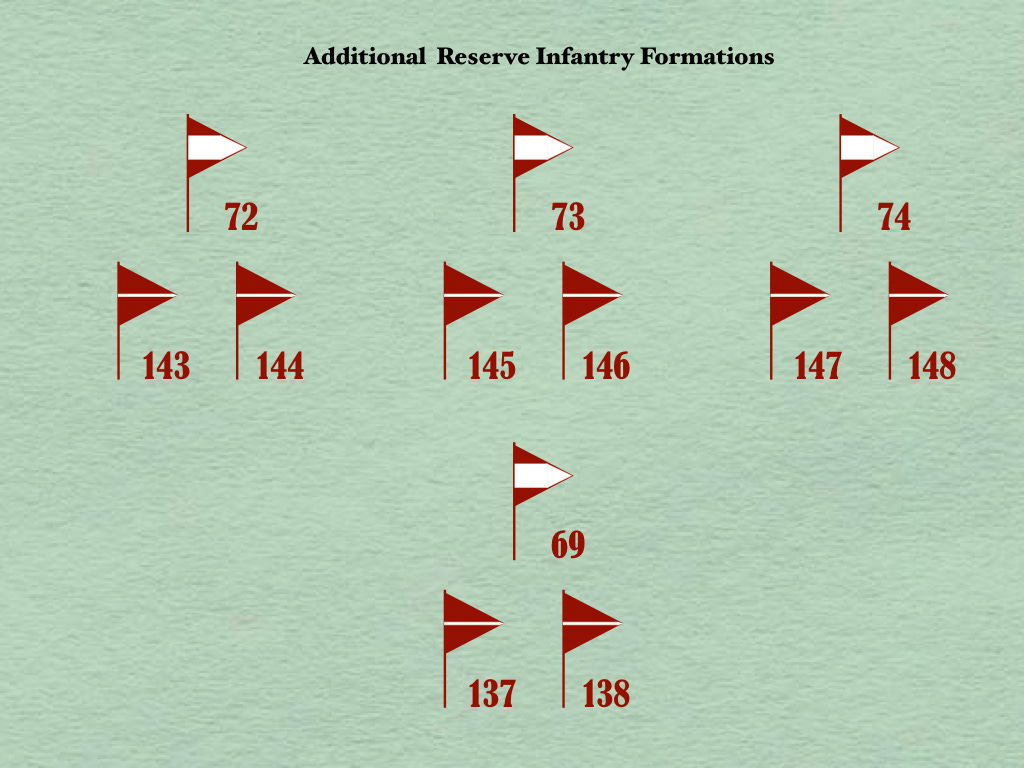The French system of simple arithmetic relationships between the numbers assigned to infantry divisions and the designations of infantry brigades was infinitely expansible. However, when it came to the creation of additional formations in the course of mobilization for war, the French authorities declined to provide numbers to the new divisions and brigades by continuing the series they had begun in 1873. Instead, they started a second series for divisions and brigades that, like the first one, was based on the numbers used to designate the twenty military regions into which the European territory of the French Republic was then divided.1
Upon mobilization, the First Military Region, located in the vicinity of the city of Lille, put three infantry divisions into the field. The 1st and 2nd Infantry Divisions got their numbers from the two peacetime divisions belonging to the First Military Region. The 51st Reserve Infantry Division received a number created by adding fifty to the number of military region.2
As was the case with infantry brigades that had existed in peacetime, the infantry brigades of reserve infantry divisions bore numbers formed by the application of simple arithmetic to the number of their parent division. Thus, the two infantry brigades of the 51st Reserve Infantry Division were designated as the 102nd and 101st Reserve Infantry Brigades.
The basic version of this scheme sufficed to provide numbers to the first twenty reserve reserve divisions mobilized in 1914, as well as the first forty reserve infantry brigades. However, as the chief author of the French mobilization plan, General Joseph Joffre, wished to form a total of twenty-four reserve divisions, the scheme for assigning numbers of new formations had to be adjusted somewhat.
The first division that could not use a number based upon its military region of origin was the 69th Reserve Infantry Division. Formed from elements of two different (but adjoining) regions, it made use of a number left idle by peculiar organization of French forces in North Africa, which prevented the 19th Military Region from forming a reserve division. This same exception made available the numbers used by the two infantry brigades of the 69th Reserve Division. The three remaining reserve divisions got their numbers, and the numbers of their component brigades, by the simple extension of the “regional” numbers used for the first twenty formations of their type.
Source: France. Etat-major des armées. Service historique, Les Armées Françaises dans la Grande Guerre (Paris: Imprimerie Nationale, 1923-1924), Tome X, 2e Volume.
Of the twenty-one régions militaires of metropolitan France, twenty were located in Europe and one in Algeria. Of the twenty European military regions, eighteen (1-18) were the regions organized in 1873 and two (20-21) were border regions formed afterwards. The military region in Algeria was organized in a way that differed greatly from those of European military regions. Thus, while the numbers that logically belonged to its infantry divisions (37 and 38) and brigades (73-76) were not used in peacetime, they were set aside for the formations that, in the event of a European war, would be created from North African elements.
For a variety of well-drawn maps of the military regions at various points in time between 1873 and 1914, see the website of A. Carobbi, Le Parcours du Combattant de la Guerre 1914-1918.






